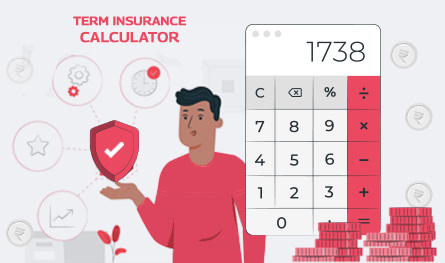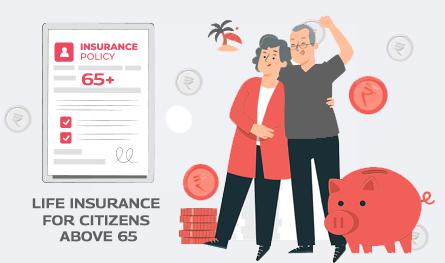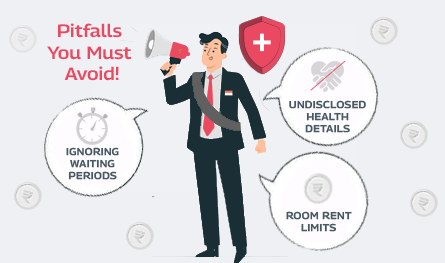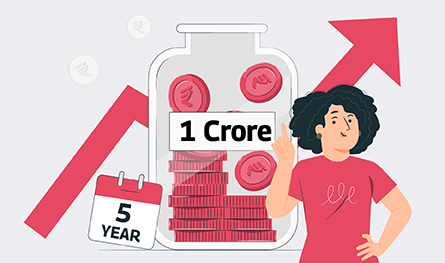Related Articles
 Jan 08, 2025
Jan 08, 2025
Is Varicose Vein surgery covered under the health insurance policy in India
 Health Insurance
Health Insurance
.png)
Health insurance offers benefits even if you don't make a claim. Yes, you heard that right! Every year, when you don’t make any claims, it becomes a special year. It’s a sign that you remained healthy throughout the year, and your health insurance company rewards you for it. This reward is known as a cumulative bonus. Read on to know more about this attractive feature.
.png)
A cumulative bonus in health insurance, often known as the “no-claim bonus”, is offered by health insurance providers to those policyholders who haven’t made a claim during the policy year. It’s intended to be an incentive for policyholders who are not incurring costs for the company. Typically, this reward is reflected in an increase to the sum insured, which is the maximum amount your policy will cover. This is done without charging any additional premium, as is the normal case with raising the sum insured.
Although the nuances of calculating and offering such bonuses vary from provider to provider, the core concept remains pretty much the same across companies. These are the key points considered in the process.
When you complete a whole policy year without making any claims, you are eligible for a cumulative bonus.
The bonus of the cumulative bonus in health insurance is typically offered as a percentage increase in the sum insured. For example, let’s assume your base policy amount is ₹5,00,000. The active bonus rate of your insurer is 10%. In this case, if you go through an entire policy year without making any claims, your sum insured will increase by 10%. The bonus amount will be ₹50,000, and when it is added to your policy amount, your sum insured becomes ₹5,50,000. The bonus rate can vary from 5% to 50% per year.
For consecutive claim-free years, the bonus can keep accumulating. However, the amount might be restricted to a limit, which can be 50 to 100% of the original amount insured. This means your policy amount will increase by a maximum of 50% or 100% over consecutive claim-free years. Going back to our example, a policy amount of ₹5,00,000 could grow to ₹7,50,000 or ₹10,00,000 with 50% and 10% bonus, respectively, without an increase in premium.
When you make a claim, the bonus accumulated in the previous year may be reduced or even fully reset, depending on your policy terms and conditions. In most cases, all the bonus added to the original sum is removed once a claim is made.
If you wish to transfer your bonus while porting your insurance policy, then the first step would be to apply at least 45-60 days ahead of your current policy’s renewal date, as per IRDAI’s guidelines. Your new insurer will check your documents and terms, and recognise the accumulated bonus as of the date. You will need to submit the required documents, including policy agreements, a notice of renewal, your claim history (which must show that you have not made any claims), and a portability application form.
Now that we have understood how the cumulative bonus works, let’s move on to how the cumulative bonus can be claimed. When you file a claim, the current value of your policy (original sum insured plus the added cumulative bonus) becomes available for your use. For example, if your policy amount is ₹5,00,000 and the bonus added is 50% of it, then the current value is ₹ 7,50,000, and it will be available. This amount represents your maximum claimable limit.
Simply put, the cumulative bonus gives you a larger safety net for medical expenses, rewarding your claim-free streak while ensuring robust coverage when needed.
There are two kinds of claims made in health insurance cases. For a cashless claim, you would receive treatment at a hospital that is part of the insurer’s network. This way, the insurer will directly settle with the hospital after the claim is approved. In other cases, you will have to settle the bills and then claim reimbursement from your insurer.

Paybima Team
Paybima is an Indian insurance aggregator on a mission to make insurance simple for people. Paybima is the Digital arm of the already established and trusted Mahindra Insurance Brokers Ltd., a reputed name in the insurance broking industry with 17 years of experience. Paybima promises you the easy-to-access online platform to buy insurance policies, and also extend their unrelented assistance with all your policy related queries and services.

.png)
If you are planning to buy two-wheeler insurance and are seeking answers to some frequently asked questions, look no further. Read on to know the two wheeler insurance FAQs related to bike insurance policy in this post.


Let’s be honest – life insurance planning isn’t exactly someone’s weekend hobby. It is the financial equivalent of flossing: we understand its importance, but we tend to put it off. But somewhere between balancing work and life, you might realise you need to have a solid plan in place – just in case.


If you think of life insurance, chances are you are picturing something people buy in their 30s or 40s. But what if you are 65 or older and just getting started? The good news is that you are never too late. Whether you are thinking of easing the financial burden on your family, covering final expenses, or simply leaving behind a legacy, there are life insurance options tailored just for you.
This article will be a guide to life insurance for senior citizens above 65 years, explaining why it is important, the type of insurance options, and how to get the right policy for you.


Health insurance plans are purchased with the hope of medical protection in times of need. However, sometimes it ends up being a source of surprise and disappointment. This mostly happens when people rush to buy health insurance plans, often overlooking essential aspects. Ignoring waiting period clauses, misunderstanding exclusions, and being unaware of sub-limits can lead to unwanted problems in the future.


If you are looking at investment policies offering INR 1 Crore in 5 years, we talk about some excellent plans in this post to help you choose the best one and reach your goal. However, it is important not to get swayed. Doing proper research and taking advice from financial or insurance advisors is important. Learn about such investment plan in this post.
